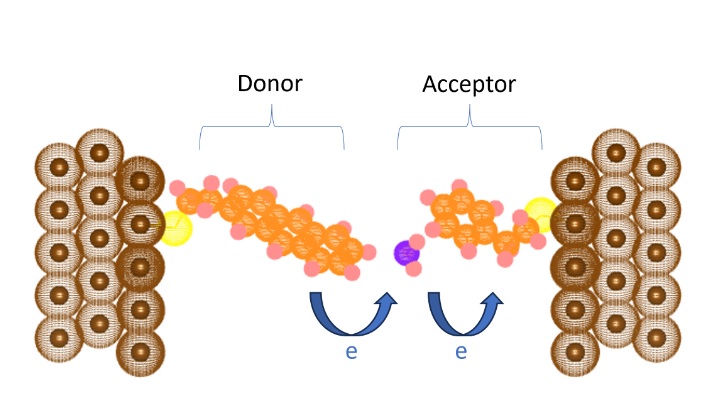A Computational Model for a Molecular Chemical Sensor

An electronic nose is a device that can detect gases and recognise odour. In general, however, they cannot yet compete with the versatility and sensitivity of the best biological noses. Drawing on a proposed theory of how humans identify odour (the vibrational theory of Luca Turin) we are working on designing a sensor that detects the vibrational frequencies of molecules using quantum tunnelling of electrons, and which is built from a single molecule.
In this paper we introduce a model for such a sensor with five components: two anchoring groups that connect the sensor to electrical leads, an electron donor, an electron acceptor and a molecular bridge connecting them. The odourant molecule will be positioned near this bridge, held in place through weak interactions. When the molecule undergoes vibrations, its charges move which allows it to interact with electrons travelling between the donor and the acceptor. A signal is produced if the molecule vibrates with a frequency that matches the change in energy the electrons need to travel readily from the donor to the acceptor, allowing specific frequencies (and hence odourants) to be identified. A key feature for a successful sensor is for it to block current for the wrong frequencies, which in turn requires the current flowing through it to rise sharply and then drop sharply again as the voltage varies.
In our paper we identify the specific conditions needed to achieve this sharp peak in the current, improving the sensor’s ability to detect odours. This advancement paves the way for more sensitive molecular recognition technologies.
Authors: Mengxuan Li, Clotilde S. Cucinotta and Andrew P. Horsfield
